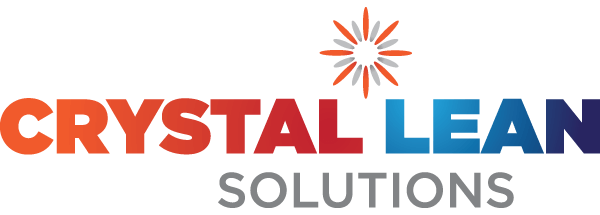Why Lean Manufacturing is so important
A common misconception is that Lean Manufacturing is all about saving money by cost cutting. However Lean production does not work with cost-cutting as the main objective as it could lead to a reduction in product quality. Lean Manufacturing does however work to reduce waste.
In the current climate, where businesses are focused heavily on cost reduction and in particular reducing energy costs, Lean deployment can help with cost reduction as it focuses businesses on improving processes and removing waste.
This in turn improves productivity and helps with business growth by doing more with, for example, the same headcount.
In every company, from manufacturing to healthcare and transportation to social services, there are hidden wastes. They cause higher production costs, longer payback periods, and lead to lower employee motivation. Lean Manufacturing involves identifying wastes and then eliminating them.
To the organisations who work according to the standards of Lean production, getting rid of such wastes provides the opportunity to save a lot of money. According to research, the introduction of Lean tools can increase productivity by 70% and the quality of products and services by up to 40%. The duration of the production cycle is much reduced and production areas are freed up. Most importantly, this approach increases the motivation of personnel, which is reflected in the growth of competitiveness of the business.
The 5 Lean principles include:
- Identification of value,
- Mapping the value stream,
- Creating flow in processes,
- Responding to customer pull,
- Continuous improvement.
Other benefits include:
- Excellent product quality
- The formation of a production system that enables problems to be detected and solved when they arise
- Long-term relationships with customers
- Flexibility and adaptability of all systems
In the early part of the 20th century, Henry Ford managed to create mass, low-cost production, with cars that had no real competitors in the world. In 1950, Eiji Toyoda from Toyota, visited the Ford plant in Michigan to learn about Ford’s methods with a view to employing them back in Japan. However, Toyota’s market was much smaller and more diverse than Ford’s so their mass-production techniques would not work as effectively in Japan. The approach then developed by Toyota in collaboration with Taiichi Ohno led to what is now known as the Toyota Production System and includes problem solving tactics. In the late 1980’s, the term ‘Lean’ was first coined by American businessperson John Krafcik. It was defined further by American researchers James Womack, Daniel Roos, and Daniel Jones in their book “The Machine that Changed the World” (1990).
A3 problem-solving is a systematic problem-solving methodology, which seeks to identify the root cause of a problem and then complete an action to prevent the re occurrence of the problem. A3 problem solving is part of the DNA of Toyota, and there you will find that each plant has A3 sized, handwritten as the problem is working through the 8 steps to completion, and then repeat for the next problem. The objective is to create a culture of systematic problem solvers to support a continuous improvement culture.
Implementing Lean involves the use of several tools and techniques to follow the principles mentioned earlier. Some of these have become fully independent management techniques.
For example, the Kaizen system. It is a whole philosophy of enterprise management, based on the idea of continuous improvement of the company’s activities – improvement of product quality, production capacity, personnel knowledge, and corporate culture. According to Taiichi Ono, “the maximum effect is achieved only with continuous improvement”.
Another tool of Lean production is the “Kanban” method. It helps companies deal with waste associated with unnecessary inventory. Material resources are purchased in limited batches, as and when needed, and are sent directly to the production floor, bypassing the warehouse.
Wastes due to incorrect organisation of the workplace can be minimised with the 5S method. The name originates from five Japanese words (Seiri, Seiton, Seiso, Seiketsu, and Shitsuke). These have been translated to Sort, Set in Order, Shine, Standardise and Sustain. Central to standardisation is that of a standardised Tiered and visual management system. The purpose of 5s is to improve housekeeping, reduce search time and improve the quality of workplace for employees.
One such action to prevent a problem from occurring is called “poka-yoke” (“fool-proof”, “error-proof”) which results in defects prevention and technical problems. For example, a machine guard door is equipped interlocks with power, so once the door is opened, the power is automatically cut off to ensure the machine is safe when operator is accessing the machine.
Lean goes beyond a set of tools and techniques. True success with Lean deployment will involve a cultural and philosophical change within an organisation. All employees, throughout the organisation seek and then solve problems through identifying what is of value and then reducing or eliminating waste. This approach is driven and supported through all levels and departments of the organisation. There are always further improvements to be made, which makes Lean a journey and not a destination.
How CLS can help
At Crystal Lean Solutions, we recognise the cost competitive pressures of organisations operating within markets that do not stand still. We offer a flexible, yet innovative, approach to Lean deployment with real energy and enthusiasm for your business.
Our experienced team will guide you through our process–based approach to deliver results, on time every time. We specialise in delivering unique and tailored Lean Training, Coaching, Mentoring, and Consultancy at both a strategic and tactical level within your organisation.
Based in Limerick, Crystal Lean Solutions are enablers of Enterprise Lean Transformation to meet your future business needs.
